By Jim Campbell, ANN CEO/Editor-n-Chief/Test Pilot (Arrogant, Over-Opinionated Know-It-All/Test Dummy)
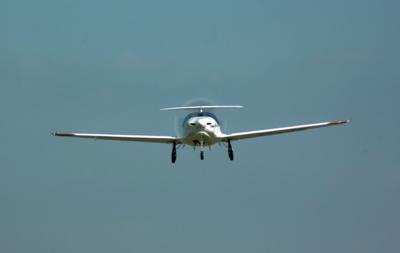
ANN E-I-C Note: Here it is… the final stretch… and that much-anticipated report card… Again, we apologize for how long it took to get the whole series published, but between pandemic issues, the fact that we’re carefully studying how we’ll do flight tests from here on out (as opposed to the junk often published online, especially on YouTube), and the fact that we’ve been laboriously rebuilding ANN into a mechanism that can better survive whatever the future throws at us… well… we’ve had a LOT on our plates.
OK… let’s summarize the preceding three-or-four million words (or so they seemed). The following report card is my subjective analysis of all that we experienced in this flight test. While emphasizing that this report card is specifically detailed for a high-performance single engine cruiser… and evaluated to what I consider to be proper criteria for same. Also note this… I am a really tough grader… there are very few ‘Grade A’ airplanes in any category and that anything above a ‘Grade C’ means good things and is a more than acceptable aircraft.
Sooner or later, you get to choose an aircraft... and to accept the many changes such a decision will make in your life. For many, this decision is the scariest of all. It is a source either of great joy or of great consternation.
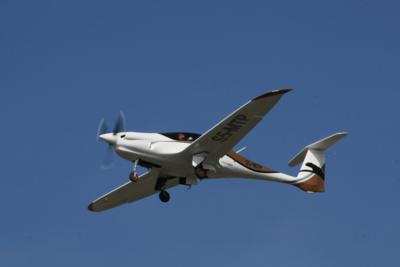
Well, we've been there a few times and each time, no matter how well the decision turned out, we always wished we'd had more objective information. So here is as much expert and objective information as we can cram into these 12000 plus words. No quibbling, no hype. Just a summary of the facts.
For more (excruciating) detail, please refer to Parts 1-5...
At the start of each listing, you will see a single phrase that sums up our feelings on the matter. Among our various pronouncements, you may see the following terms.
- Outstanding is reserved for the very best of the breed and is used sparingly.
- Highly Recommended indicates that the aircraft has distinguished itself above and beyond the norm and carries our personal recommendation, based upon the knowledge we had at press time.
- Recommended means the craft seems to be a good flyer and the company consists of acceptable people with whom to do business, and that we have uncovered few concerns in our evaluation of the machine.
- Worth Consideration (Check This Out) is used for those aircraft with which we don't have as much as experience as we would like, but which deserve your consideration. We recommend that you study the aircraft carefully, as we do not have enough data to make a more positive determination. But, things do look promising.
- We Advise Caution signifies that we have some slight heartburn with the craft or company featured. There may have been problems in the past that appear to be clearing up, for example, and we'd like you to be aware of that. Or, we may feel that the company or aircraft poses some risk of heartbreak, but is not quite bad enough for us to list as "Not Recommended."
- Not Recommended means just that. We don't recommend the craft or the company based upon our personal observations, survey data, outside reports, and direct experience with them... and if you were one of our friends or family, we would tell you to look elsewhere.
We included everything we could, good or bad…. As we always have… and no one else seems to care enough to offer.
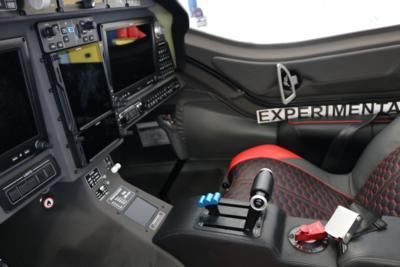
We have tried to tell it like it is, and this concept becomes a massive job when you apply it to the thousand-plus aircraft we have evaluated over the years. More important, we are very tough in our grading and scoring standards, vowing that no more than 5-10% of the list may earn any type of "A" or “Outstanding” rating in any category, despite the fact that most of the aircraft these days are fairly decent products.
We have also continued to get tougher each year. This is necessary for two reasons: to recognize that the aircraft are improving constantly and to make sure that the grades have some real impact. This is not one of those 'association' or "sport hype" efforts where the editor has claimed that their "full-page advertisers get the best support." Our goal is to do a credible, accurate, and reliable job of providing information based on expertise, experience, and evidence... not cheap, cheesy, financial wheeling and dealing. We'll leave that to the other guys. We have a great responsibility to you, and to you alone. No other outside concerns apply.

- Design/Engineering scores the general design features and depth of engineering effort expended on an individual aircraft. An aircraft with a longer history of research tends to score better here because more time has been available to do the necessary research and testing.
- Ground Handling covers both the actual handling on the ground as well as the entry/exit/comfort of the aircraft. Ground behavior is judged as a function of the difficulty and/or stability of the design. Taildraggers are not scored worse than trikes unless their characteristics are less acceptable in comparison to other aircraft with similar planforms.
-
Flight Characteristics include the average behavior of a number of flight maneuvers as well as the stability and performance of the test aircraft. Please note that stability and control are graded in terms of the primary aircraft mission. Very fast roll rates, for instance, are a plus for an aerobatic ship, but a decidedly negative feature for an entry-level trainer.
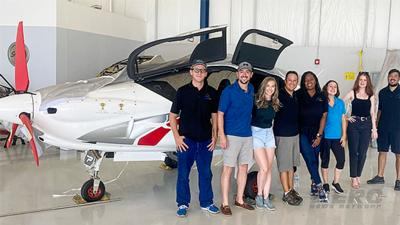
-
Company Profile reviews the company history, customer comments, our own experiences with the company, and whether or not the company has consistently met customer needs. Companies with bad financial or legal histories may be expected to receive lower grades because such companies tend to present an increased risk to the aviation consumer.
- Kit/Plans takes into account the overall "buildability" of the design. There is no scoring preference for kit-built aircraft over plans-built; they are simply evaluated in terms of the quality of the kit and/or plans.
-
Bang for the Buck scores the ratio of dollar to value that we feel the aircraft represents. A good airplane that costs little will earn a higher grade than if it cost a lot more.
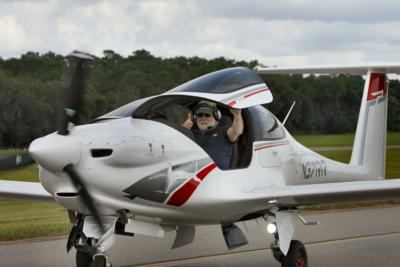
-
Risk Factor is scaled from 0 to 10. The lower the number, the lower the risk. This category is compiled from a number of factors: age/reputation of the design and company, reports of problems in kit completions, kit complexity, special construction requirements, or anything else that we feel increases the risk of an unfavorable aircraft purchase for the builder (i.e., that it never gets airborne). If a company is in trouble, or the aircraft is not yet thoroughly tested or has some bad habits, or the company is playing weird games or pulling too many "swifties," if recent supply problems have been reported, or if the company president has a return address at Leavenworth, expect to see a bad, or "high," number (and an address to which you can send your hate mail).
-
Final Grade is just that, the total score for the aircraft. Any exceptional features in a specific category may be scored higher if we feel that it deserves it, especially in the Company Profile or Bang for the Buck categories.
Finally, additional comments may follow a grade to explain a little about how the grade was reached or to offer applicable caveats.
OK… Here is the report card for the Pipistrel Panthera….
Report Card: 2020 Pipistrel Panthera Exhibition Class-Experimental
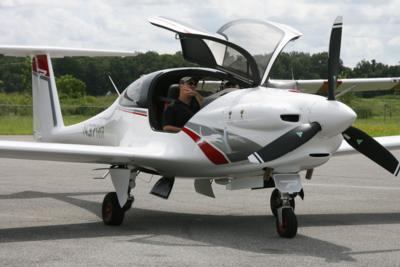
Design/Engineering: Highly Recommended. With very few exceptions, the overall engineering seen and sampled in this flight test article was extremely well-thought out and executed. Workmanship, for such an early effort, was exceptionally good. Still; it’s a new airplane, production-wise and I’m pretty interested in seeing what future production and certification improvements may hold for this aircraft…. Which came close to earning an ‘Outstanding’ recommendation in this category.
Ground Handling: Recommended. Outside of some visibility issues, and the usual entry and exit games one needs to play to get into a high-performance, low-wing, aircraft these days, the Panthera acquitted itself fairly well. Still the ground visibility issues, even more so than in-flight viz, keep this rating to a simple “Recommended” rating for the time-being.
Flight Characteristics: Highly Recommended. Flat-out… this is a great-flying airplane with little to gripe about and much to like. Performance, from what we observed came very close (indeed, close enough) to the promised specs to be nearly unique in the current crop of today’s over-hyped high-performance singles. Overall handling was quite good, and again, we’re curious to see what a current generation of this aircraft flies like in a year or two… especially post-certification. We expect to be impressed.

Company Profile: Recommended. We’ve had a number of reports of less than easy communication and customer-service experiences with the Slovenia HQ for Panthera and after a few abortive communications with them, ourselves, we can quite understand why. This almost cost them the “Recommended” Rating in favor of something less laudatory. HOWEVER; the North American market is administered by Australia’s Michel Coates, along with US rep Right Rudder Aviation… both of whom have GREAT reps, solid ethics and communications skills, and have been studiously honest in their dealing with us heretofore. They both make up for what Pipistrel HQ lacks.
Kit/Plans: YTBD. We have not evaluated any kit or plans for this aircraft.
Bang for the Buck: Recommended. A fully-equipped Panthera will set you back some $600K… and is still an Experimental-Exhibition bird, for the moment. Once certified, expect this grade to be sharply improved… and to see it out kicking some Cirrus ass here and there… On the certified side of things, a properly supported Panthera could be a VERY competitive aircraft.
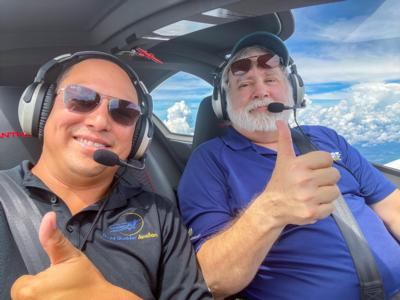
Risk Factor: 6. There is an issue that most adversely affects this otherwise great little airplane – insurance. Outside of the limitations of Experimental Certification and the not-too-friendly price tag, there is a serious problem plaguing this airplane that is not the fault of Pipistrel. Insurance companies are apparently being VERY unkind in quoting coverage (if, indeed they will, at all) for these airplanes due to their rarity, foreign manufacture, and the lack of a cohesive North American track record. Time and additional aircraft, especially when certified, will mollify this issue in the future, but for some time hence, this is going to be the most pressing issue Panthera devotees will have to deal with. There are efforts to fix this problem and we’ll let you know if that occurs.
Final Grade: Highly Recommended. This was a tough call… but what the airplane does well, and that’s a LOT, it does VERY well… and more to the point, the future, with certification in the offing, bodes well for the success of the design. It was not only an airplane that I enjoyed flying, it's one that I look forward to flying again.
 Aero-News: Quote of the Day (10.23.25)
Aero-News: Quote of the Day (10.23.25) ANN's Daily Aero-Linx (10.23.25)
ANN's Daily Aero-Linx (10.23.25) ANN FAQ: Turn On Post Notifications
ANN FAQ: Turn On Post Notifications Classic Aero-TV: Kitfox Upgrades Back-Country Undercarriage
Classic Aero-TV: Kitfox Upgrades Back-Country Undercarriage Airborne-NextGen 10.21.25: NZ Goes Electric, World Cup UAVs, eAviation Shuttered
Airborne-NextGen 10.21.25: NZ Goes Electric, World Cup UAVs, eAviation Shuttered











